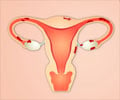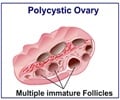- Diseases of the Female Reproductive System - (https://www.uzhnu.edu.ua/en/infocentre/get/5644)
- Gynecological Conditions - (https://www.ucsfhealth.org/conditions/gynecological_conditions/)
- Signs and Symptoms for Gynecologic Problems - (https://www.ariahealth.org/programs-and-services/centers-of-excellence/women-s-health/gynecology/signs-and-symptoms-for-gynecologic-problems)
- 10 Common Gynecological Problems Faced by Women - (https://parenting.firstcry.com/articles/10-common-gynecological-problems-faced-by-women/)
- Well-Woman Visit - (https://www.acog.org/clinical-guidance-and-publications/committee-opinions/committee-on-gynecologic-practice/well-woman-visit)
- Screening for Gynecologic Conditions With Pelvic Examination: A Systematic Review for the U.S. Preventive Services Task Force - (https://www.ncbi.nlm.nih.gov/books/NBK442155/)
What are Gynecological Disorders?
Gynecological disorders are those disorders that affect the female reproductive system. The organs included in reproductive system are breasts, uterus, fallopian tube, ovaries, and external genitalia.(1✔ ✔Trusted Source
Diseases of the Female Reproductive System
Go to source)
Every woman suffers from some gynecological disorder at some point in her life. There is a very important impact of gynecological disorders on female’s sexual function. These must not be taken lightly as they can adversely affect the ability of woman to produce children or in some cases may threaten their lives.

Which are the Top Ten Gynecological Disorders in Women?
The most common top ten gynecological disorders will be dealt in brief in this article. They include:(2✔ ✔Trusted Source
Gynecological Conditions
Go to source)
- Dysmenorrhea or painful menstruation
- Leucorrhea (excess white vaginal discharge)
- Amenorrhea or absence of period
Polycystic ovarian syndrome (PCOS) - Fibroids
- Endometriosis
- Pelvic inflammatory disease
- Vaginitis
- Menopause
- Pain during sex
What are the Common Gynecological Symptoms for Which You must Consult a Gynecologist?
Vaginal Bleeding and discharge commonly happen with every woman during menstruation. However, if you notice anything different, you must not let that go ignored and must consult your gynecologist. Mild symptoms can be treated but severe cases, and cases, which are ignored for a long time, may lead to infertility. Some vaginal symptoms may indicate sexually transmitted diseases or may be even cervical cancers. You must consult your doctor if you have the following symptoms.(3✔ ✔Trusted Source
Signs and Symptoms for Gynecologic Problems
Go to source)
- If you are getting your periods too early or too late.
- Abnormal vaginal bleeding during periods or in between periods
- Pain in the pelvic area and it must not be related to menstrual cramps.
- Breast pain and Breast Lumps in Women.
- Burning sensation during passing urine.
- Vaginal bleeding while having sex or after having sex.
- Painful sexual intercourse.
- Itching, swelling or redness in vaginal area.
- Any abnormal lump or mass in the genital area.
- Increased vaginal discharge.
- Vaginal discharge with unpleasant odor or of unusual color like green, yellow, or brown.

Common Gynecological Conditions
1. Dysmenorrhea or painful periods
Dysmenorrhea refers to painful periods sufficient to incapacitate daily activities. It is of two types, primary and secondary dysmenorrhea.(410 Common Gynecological Problems Faced by Women
Go to source)
In primary dysmenorrhea, there is no associated pelvic disease. It is mostly confined to adolescents and in ovulatory cycles. The pain subsides on its own once the woman gets pregnant or after delivery. It usually appears within 2 years of menarche. Family history such as mother or sister having similar complaint may be present.. It is more common among girls belonging to affluent society. The pain usually begins few hours before or just with the onset of menstruation and usually lasts for few hours, may extend for the entire day. The pain is spasmodic i.e. the patient experiences painful contractions in the lower abdomen, which may radiate to the back and medial aspect of thighs.
Treatment includes improvement of general health and psychotherapy with reassurance. During menses, bowels must be kept empty and constipation should be avoided. Simple antispasmodic tablets may provide relief. Mefenamic acid 250-500 mg 8 hourly, or ibuprofen 400 mg 8 hourly. USG is done to rule out any pelvic pathology.
Secondary dysmenorrhea occurs in association with underlying pelvic disease. Common causes include chronic pelvic infection, pelvic endometriosis, uterine fibroids, placement of copper-T in uterus etc. The patients are usually in their thirties and have had children. The typical characteristic of pain is that it is dull, situated in back and in front, and does not radiate anywhere. It occurs 3-5 days prior to the period and relieves with the onset of bleeding.
Treatment focuses on the cause and not on the symptom.
2. Amenorrhea
Amenorrhea means absence of menstruation. It is of two types physiological and pathological. Physiological amenorrhea occurs before puberty i.e. before the onset of menarche, during pregnancy, during lactation and after menopause. Pathological amenorrhea occurs when there is some associated disease and it is subdivided into cryptomenorrhea, primary amenorrhea, and secondary amenorrhea.
- Cryptomenorrhea- There occurs periodic endometrial shedding and bleeding but the menstrual blood fails to come out of the vagina due to some obstruction in the passage, commonest cause of obstruction being imperforate hymen.
- Primary amenorrhea- The normal upper age limit for menarche is 15 years. A girl who fails to have menstrual periods by the age of 16 years is no more delayed menarche, and is identified as a case of primary amenorrhea. The causes may be developmental anomalies like absence of vagina, chromosomal abnormalities like Turner’s syndrome, thyroid and adrenal dysfunction. Scope of therapeutic success in management is very limited and is cause specific.
- Secondary amenorrhea- It is the absence of menstruation in a woman for 6 months or more in whom normal menstruation has already been established. Some of the causes are tubercular endometriosis, polycystic ovarian disease, tumors of ovaries, stress, hypothyroidism, malnutrition, diabetes etc. Treatment is cause-specific.
3. Polycystic Ovarian Syndrome (PCOS)
PCOS is the most common problem amongst young girls in this era. Stressful and sedentary lifestyles are the major culprits.

It is a syndrome marked by amenorrhea, hirsutism, and obesity associated with enlarged ovaries having multiple cysts.
It is characterized by excessive testosterone production by ovaries mainly. Ovaries are enlarged and there occurs presence of multiple (more than 12) follicular cysts measuring 2-9 mm in diameter. Patients complain of increasing obesity especially abdominal obesity, menstrual abnormalities, infertility, presence of hirsutism and acne. The patients also develop insulin resistance and are more prone to diabetes.
Treatment is case-specific. The focus is on weight reduction, balanced diet, yoga, and exercises. Medications might provide symptomatic relief. Infertility may be overcome by assisted reproduction.
4. Fibroids
Fibroids are the most common benign tumor of the uterus and also the most common solid benign tumor in a female. At least, twenty percent of the women at the age of thirty have fibroids in their wombs. Fortunately, most of them (fifty percent) remain asymptomatic. These are more common in women who have no children or in women who became infertile after one child. The prevalence is highest between 35-45 years of age.
Symptoms include heavy menstrual bleeding, irregular bleeding, dysmenorrhea, and infertility, and painful sexual intercourse, recurrent pregnancy loss in the form of miscarriage or pre-term labor, lower abdominal or pelvic pain, and abdominal enlargement.
Management is mostly surgical and the surgery may depend on the age of the patient and the severity of the condition.
5. Endometriosis
Endometriosis refers to a condition where the lining of the uterus (endometrium) is present in abnormal sites such as the muscle layer of the uterus, ovaries, tubes and occasionally beyond the pelvis.
Symptoms include painful periods, painful sex, excessive vaginal bleeding during and in between periods, infertility, and nausea, diarrhea or constipation and tiredness during periods.
Once the condition is diagnosed, treatment includes pain medications, hormone therapy such as birth control pills, patches and vaginal rings, progestin-only pills and Danazol, a synthetic steroid. If medical treatment fails, conservative surgery might be needed to remove the endometriosis tissue. Assisted reproductive methods help women with infertility. In severe cases, removal of the uterus (hysterectomy) might be performed as a last resort during the reproductive years since pregnancy cannot occur following hysterectomy.

6. Pelvic Inflammatory Disease
It is a disease of upper genital tract. It is a spectrum of infection and inflammation of the upper genital tract organs typically involving the uterus, fallopian tubes, pelvic peritoneum, and surrounding structures. It constitutes a health hazard both in the developed and developing countries. It is a major problem in the reproductive health of young women.
Risk factors include menstruating teenagers, multiple sex partners, absence of contraceptive pill use, and previous history of pelvic inflammatory disease, IUCD users, and area with high prevalence of sexually transmitted diseases.
Symptoms include lower abdominal and pelvic pain, fever, lethargy and headache, irregular and excessive vaginal bleeding, painful sexual intercourse, abnormal vaginal discharge.
Management includes intensive antibiotic therapy after finding out the causative organism.
7. Vaginitis
It is the infection and inflammation of vagina. It is very common during childhood, as there is lack of estrogen, estrogenic vaginal defense is lost, and infection occurs easily. The most common cause of vaginitis during reproductive age group is infection by microscopic organisms.
Trichomonas vaginitis is caused by organism Trichomonas vaginalis. There is sudden profuse and offensive vaginal discharge, irritation, and itching around vagina, painful urination, and increased frequency of urination. The discharge is thin, greenish-yellow, and frothy with a very bad odor. Treatment is tablet metronidazole 200 mg thrice daily given for one week.
Candida vaginitis or moniliasis is caused by organism Candida albicans. There is vaginal discharge with severely intense vulvovaginal itching and painful sexual intercourse. The discharge is thick, curdy white in color and in flakes, often adherent to vaginal wall.
Treatment includes the use of drugs like nystatin, clotrimazole or miconazole in the form of either vaginal cream or pessary. One pessary is to be introduced high in the vagina at bedtime for consecutive two weeks.
8. Menopause
Menopause is permanent cessation of menstruation at the end of reproductive life due to loss of ovarian activity. It is confirmed following stoppage of menstruation for twelve consecutive months without any other pathology. The age of menopause ranges between 45-55 years.

Following menopause, the organs of the reproductive system shrink in size; there is loss of bone mass by about 3-5% per year. The women become susceptible to osteoporosis. Risk of cardiovascular disease is high in postmenopausal women. The characteristic symptom of menopause is hot flushes. Hot flush is characterized by sudden feeling of heat followed by profuse sweating. There may be anxiety, headache, insomnia, irritability, and depression.
Other symptoms include painful sexual intercourse, lack of sexual drive, vaginal infections and dryness, painful urination, stress incontinence, and recurrent
Vaginal symptoms are best treated by topical hormonal therapy (HT), since it is associated with fewer adverse effects.
Vasomotor symptoms may require systemic HT with recommended guidelines being strictly followed. Therapy must be given for the shortest duration possible in the lowest dose to avoid serious side effects such as clot formation (
9. Leucorrhea
Leucorrhea is strictly defined as an excessive normal vaginal discharge. This means that the white discharge is excessive but is not infective. The excess secretion is evident from staining of the undergarments (brownish yellow on drying) or the need to wear a pad. It is non-infective and does not have a bad odor. It is nonirritant and does not cause itching. It may occur physiologically during
Treatment is case specific and maintenance of local hygiene is advocated.
10. Painful sexual intercourse
Painful sexual intercourse also called as
Causes may be narrow vagina, tough hymen, vulval infection, urethral disease, vaginitis, endometriosis, pelvic inflammatory disease etc.
Treatment depends on the cause. Often, sex education of both the partners relieves the symptoms.
What is the Importance of Gynecological Screening?
- The clinical examination of a gynecological patient should be thorough and meticulous. This must include in depth history taking and examination.(5✔ ✔Trusted Source
Well-Woman Visit
Go to source, 6✔ ✔Trusted Source
Screening for Gynecologic Conditions With Pelvic Examination: A Systematic Review for the U.S. Preventive Services Task Force
Go to source) - Examination includes
breast examination , abdominal examination and pelvic examination, which includes examination of external genitalia, inside of vagina and cervix and rectal examination. - All sexually active women should be screened starting from the age of 21 years or after 3 years of vaginal sex with no upper age limits. Screening should be done yearly until the age of 30. Thereafter, it should be done at an interval of every 2-3 years after three consecutive yearly negative smears.
- Cervical and vaginal smears are taken by Pap smear for screening.
- The screening helps the doctor explain to the patient about maintaining a healthy lifestyle, minimizing health risks, and to identify cases of sexually transmitted infections, breast cancers,
cervical cancer , or endometrial cancer. - Early diagnosis helps in effective treatment and better prognosis.
Health Tips
- Maintain local hygiene
Drink plenty of water - Follow a
diet rich in fruits and vegetables - Get regular exercise and practice
stress-reduction techniques such as yoga . - Practice safe sex
- Do NOT ignore any unusual symptoms related to reproductive system.











